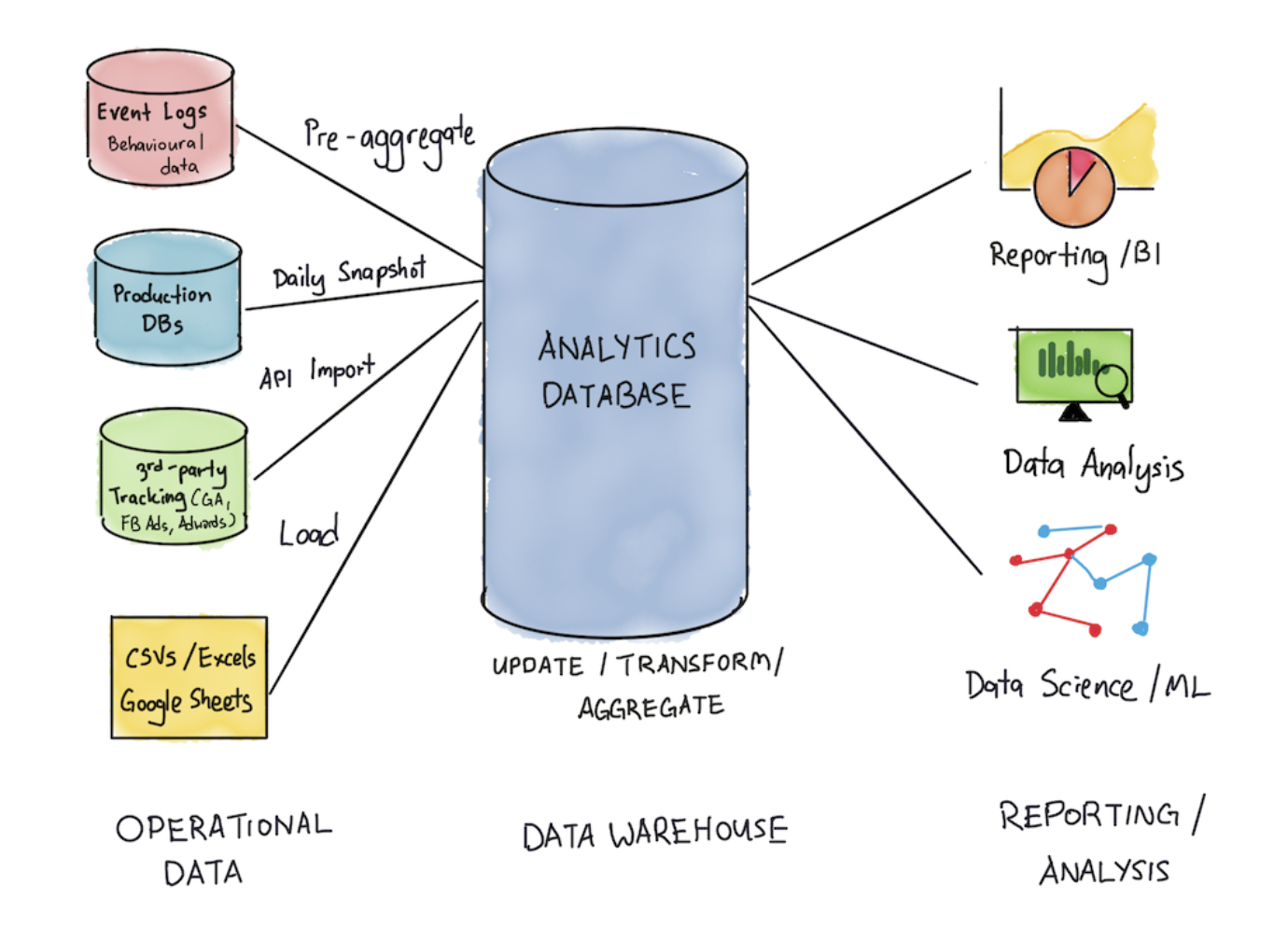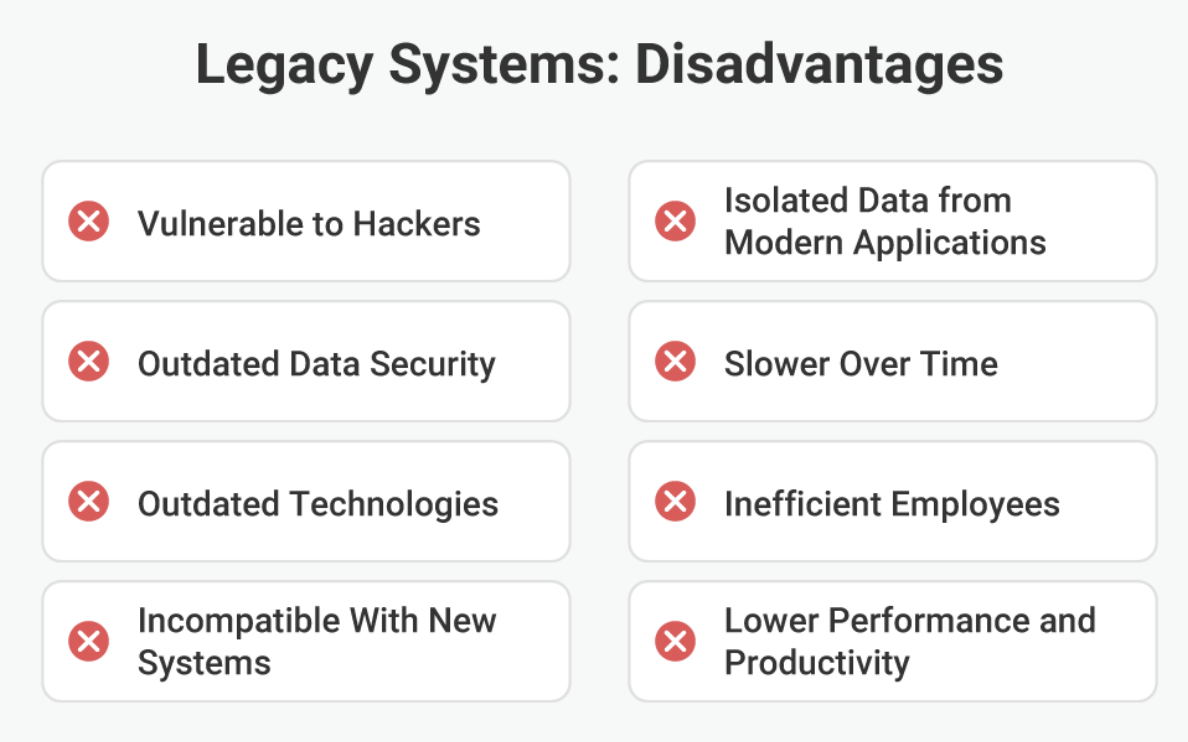Introduction to Modern Analytics
What is Modern Analytics?
The modernization of data through improved compute processing, storage, and tooling has created a shift in scalable, agile, and future-ready analytics. In the past, organizations and data teams worked in legacy compute processing and tooling that slowed down not only insights and reporting response times, but organization adoption to be data-savy.
Some tools that are integral to the “Modern Analytics” stack is foundational on Snowflake Data warehousing. From there, other tools like Fivetran, dbt, Looker, and Mode are common for a part of that stack.

Why Modern Analytics?
The legacy data and analytics systems traditionally had obstacles such as dealing with growing data demands of cost of retooling, complicated system integrations, poor data quality, and even inability to harness new technology. An extension to this traditional data proocesses and systems included
- Decentralized and undemocratized data sources
- Storage limitations
- Inability to change business needs, when required
- Lack of advanced analytics like A/B Testing, Forecasting, or Machine Learning
Compared to this past, modern embedded analytics systems and processes give business users the freedom to edit visualizations or dashboards or to create their own–self-service analytics.
According to research by Salesforce, 63% of retails businesses don’t respond to consumer demands and insights in an agile manner w/legacy systems.
Wouldn’t you want to offer the best for your customers?
Modern stack applications enable the collaboration between BI and visualizations so they can extract insights and actionable information in times when these insights are actually needed and can make an impact.
Legacy Systems vs Modern Systems
A legacy system is a outdated and complext system, technology, or software that limits an organization’s workflow or operational work. It continues to be used by organizations as it still functions and performs the tasks that it was designed to do, however, legacy systems no longer allow for future growth, with little-to-no maintenance.
Often referencing a legacy system as a legacy one usually means that it paved the way for the standards that would follow it in the future.
When still utilizing a legacy system, you may even get (at least one) of the following issues:

Other issues with legacy systems is that as they use outdated technologies, they can become incompatible with new processes or systems that are also important for business growth. Many of the older systems were never even designed to be able to integrate with other systems. As a result of using a legacy system, you are isolating data from other systems.
Furthermore, legacy systems become slower and slower over time, which means that the users that are forced to become more inefficient in both their work and performance. As a result, the productivity of business users results in an unproductive organization.
The Decision – Build vs Buy
Organizations who take the step towards modernization opt to buy an already established (i.e. popular) solution to integrate with their existing systems. This is generally the easiest decision between buying or building, and is typically the preferred option as it saves both time and money.
Before buying, of course, you need to determine whether the embedded analytics solution is the right one for your business needs. But no matter the provider you choose, going for that option will save your developers’ time so that they can focus on your business core competency and what it was initially designed for.
When investing in an existing solution, you save time, money, and maintenance & upgrade concerns.
According to Nucleus Research analytics return $13.01 for every dollar spent.
- That’s a 13:1 ROI for you, and for your customers when you offer embedded analytics in your SaaS solution!
Building your own analytics capabilities into your application might be the right decision for those organizations that could afford the higher budget and the headcount to do it. The estimated average cost of building your own solution (the project takes about 7 months to complete) is as much as $350k. In comparison, the standard price for an embedded solution starts anywhere from $30K to $75K per year.
Building your own solution gives you complete control over the system/application. By keeping all aspects of the development in-house, you can control everything from customization and branding to user experience and functionalities.
Another argument in favor of building your own solution is that it allows you to solve technical, security, or adminstrative problems that could arise internally.
Doing this research will help you in the long run in your implementation to Modern Analytics.
I recommend this next chapter, instrumentation, to prepare your organization for Modern Analytics.
